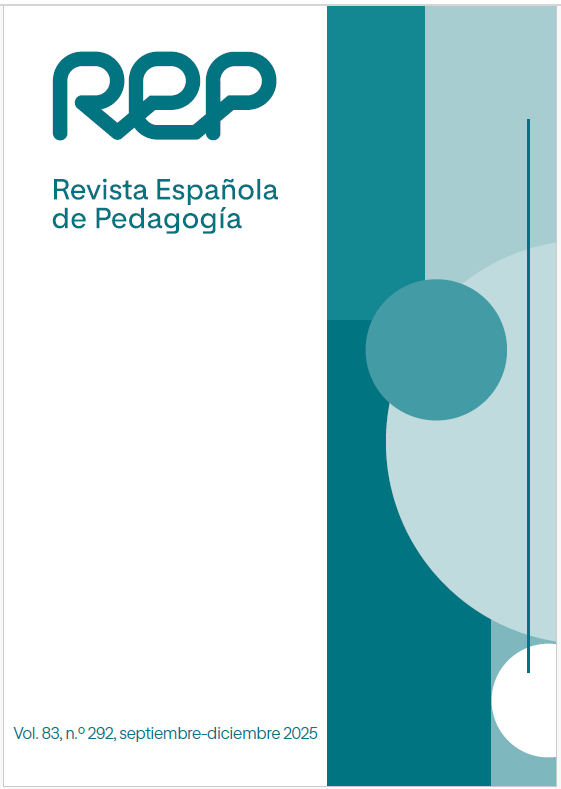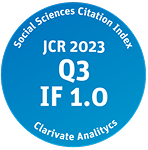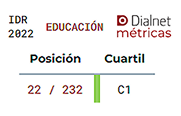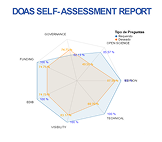¿Quién, cómo, dónde y cuándo se evalúa el aprendizaje-servicio? Una revisión sistemática
DOI:
https://doi.org/10.9781/rep.2025.391Palabras clave:
aprendizaje-servicio, evaluación, educación superior, universidad, revisión sistemáticaResumen
Este trabajo de investigación surge de la necesidad de desarrollar sistemas de evaluación más sólidos y coherentes, que faciliten una evaluación efectiva de las experiencias de aprendizaje-servicio (ApS) en el ámbito universitario, con el propósito de fomentar la formación de profesionales comprometidos con la transformación y el bienestar de la sociedad. Para colaborar a cubrir esa necesidad, este estudio presenta una revisión sistemática de los sistemas de evaluación utilizados para medir los resultados de aprendizaje en experiencias de ApS en entornos universitarios. Se analizaron un total de 56 artículos seleccionados siguiendo los criterios elaborados por la declaración PRISMA y utilizando las bases de datos de WoS, Scopus y Eric. Los resultados obtenidos en este trabajo arrojan luz a la comunidad educativa sobre cómo se están evaluando las experiencias de ApS en el contexto universitario. Asimismo, permiten orientar la futura acción docente señalando aquellos elementos referidos a los resultados de aprendizaje, criterios, técnicas, agentes y tipos de evaluación empleados en estas experiencias. Se detectan algunos sistemas evaluativos incompletos y también algunas incoherencias. Se concluye que, pese a los esfuerzos observados, existen áreas de mejora en los sistemas de evaluación.
Descargas
Citas
Alaez, M., Díaz-Iso, A., Eizaguirre, A., & García-Feijoo, M. (2022). Bridging generation gaps through service-learning in higher education: A systematic review. Frontiers in Education, 7, 841482. https://doi.org/10.3389/feduc.2022.841482 DOI: https://doi.org/10.3389/feduc.2022.841482
Al-Khasawneh, A., & Hammad, B. K. (2015). Implementation of service learning and civic engagement for students of computer information systems through a course project at the Hashemite University. Education for Information, 31(4), 181-193. https://doi.org/10.3233/EFI-150951 DOI: https://doi.org/10.3233/EFI-150951
Aramburuzabala, P., Gezuraga, N., & López de Arana, E. (2019). Cómo abordar la evaluación en los proyectos de aprendizaje-servicio. In M. Ruiz-Corbella & J. García-Gutiérrez (Eds.), Aprendizaje-Servicio: los retos de la evaluación. Narcea Ediciones.
Arroyo, O., Barreto-Tovar, C. H., & Feliciano, D. (2022). Service Learning as a teaching strategy of seismic vulnerability during the COVID-19 Pandemic. International Journal of Engineering Education, 38(5), 1484-1494.
Begley, G. S. (2013). Making Connections: Service-Learning in introductory cell and molecular biology. Journal of Microbiology & Biology Education, 14(2), 213-220. http://dx.doi.org/10.1128/jmbe.v14i2.596 DOI: https://doi.org/10.1128/jmbe.v14i2.596
Bheekie, A., Adonis, T. A., & Daniels, P. (2007). Contextualising undergraduate pharmacy training in service-learning at the University of the Western Cape. Education as Change, 11(3), 157-167. https://doi.org/10.1080/16823200709487186 DOI: https://doi.org/10.1080/16823200709487186
Bheekie, A., Obikeze, K., Bapoo, R., & Ebrahim, N. (2011). Service learning in pharmacy: opportunities for student learning and service delivery. African Journal of Pharmacy and Pharmacology ,5(23), 2546-2557. https://doi.org/10.5897/AJPP11.375 DOI: https://doi.org/10.5897/AJPP11.375
Bill, D., & Casola, A. (2016). Developing, implementing, and evaluating a Latino service learning project in an accelerated MPH community health course for health education students. Pedagogy in Health Promotion, 2(3), 184-192. https://doi.org/10.1177/2373379916633716 DOI: https://doi.org/10.1177/2373379916633716
Brail, S. (2013). Experiencing the city: Urban studies students and service learning. Journal of Geography in Higher Education, 37(2), 241-256. https://doi.org/10.1080/03098265.2012.763115 DOI: https://doi.org/10.1080/03098265.2012.763115
Brail, S. (2016). Quantifying the value of service-learning: A comparison of grade achievement between service-learning and non-service-learning students. International Journal of Teaching and Learning in Higher Education, 28(2), 148-157.
Brand, B. D., Brascia, K., & Sass, M. (2019). Active learning through community outreach: A case study of active learning and service-learning in a natural hazards, vulnerability, and risk class. Higher Learning Research Communications, 9 (2). https://doi.org/10.18870/hlrc.v9i2.452 DOI: https://doi.org/10.18870/hlrc.v9i2.452
Braunsberger, K., & Flamm, R.O. (2013). A mission of civic engagement: Undergraduate students working with nonprofit organizations and public sector agencies to enhance societal wellbeing. Voluntas, 24, 1–31. https://doi.org/10.1007/s11266-012-9289-6 DOI: https://doi.org/10.1007/s11266-012-9289-6
Bringle, R. G., & Hatcher, J. A. (1996). Implementing service learning in higher education. The Journal of Higher Education, 67(2), 221-239. https://doi.org/10.1080/00221546.1996.11780257 DOI: https://doi.org/10.1080/00221546.1996.11780257
Cadieux, C., Medlin, C., & McCombs, G. (2016). Community college and university interprofessional collaboration: Student centered partnership between nutrition and dental hygiene faculty. Inquiry: The Journal of the Virginia Community Colleges, 20(1).
Casile, M., Hoover, K. F., & O'Neil, D. A. (2011). Both‐and, not either‐or: knowledge and service‐learning. Education + Training, 53(2/3), 129-139. https://doi.org/10.1108/00400911111115672 DOI: https://doi.org/10.1108/00400911111115672
Chrispeels, H. E., Klosterman, M. L., Martin, J. B., Lundy, S. R., Watkins, J. M., Gibso, C. L., & Muday, G. K. (2014). Undergraduates achieve learning gains in plant genetics through peer teaching of secondary students. CBE—Life Sciences Education, 13(4), 573-738. https://doi.org/10.1187/cbe.14-01-0007 DOI: https://doi.org/10.1187/cbe.14-01-0007
Collazo Expósito, L. M., & Geli de Ciurana, A. M. (2017). Avanzar en la educación para la sostenibilidad. Combinación de metodologías para trabajar el pensamiento crítico y autónomo, la reflexión y la capacidad de transformación del sistema. Revista Iberoamericana de Educación, 73, 131-154. https://doi.org/10.35362/rie730295 DOI: https://doi.org/10.35362/rie730295
Dewoolkar, M. M., George, L., Hayden, N. J., & Neumann, M. (2009). Hands-on undergraduate geotechnical engineering modules in the context of effective learning pedagogies, ABET Outcomes, and Our Curricular Reform. Journal of Professional Issues in Engineering Education and Practice, 135(4). https://doi.org/10.1061/(ASCE)1052-3928(2009)135:4(161) DOI: https://doi.org/10.1061/(ASCE)1052-3928(2009)135:4(161)
Díaz-Iso, A., Gutiérrez-Fernández, N. & Barrenetxea-Mínguez, L. (2023). Conectando teoría y práctica: la metodología de Aprendizaje-Servicio en la didáctica de las lenguas en Educación Superior. Aula Abierta, 52(4), 343–350. https://doi.org/10.17811/rifie.52.4.2023.343-350 DOI: https://doi.org/10.17811/rifie.52.4.2023.343-350
Drab, S., Lamsam, G., Connor, S., DeYoung, M., Steinmetz, K., Herbert, M., & Benore‐Parsons, M. (2006). A course designed for undergraduate biochemistry students to learn about cultural diversity issues. Biochemistry and Molecular Biology Education, 34(5), 326-331. https://doi.org/10.1002/bmb.2006.494034052631 DOI: https://doi.org/10.1002/bmb.2006.494034052631
Ebacher, C. (2013). Taking Spanish into the community: A novice's guide to Service-Learning. Hispania, 96(2), 397-348. https://doi.org/10.1353/hpn.2013.0064 DOI: https://doi.org/10.1353/hpn.2013.0064
Evans, C. A., Bolden, A. J., Hryhorczuk, C., & Noorullah, K. (2010). Management of experiences in community-based Dental Education. Journal of dental education, 74(10), 525-532. https://doi.org/10.1002/j.0022-0337.2010.74.10_suppl.tb04978.x DOI: https://doi.org/10.1002/j.0022-0337.2010.74.10_suppl.tb04978.x
Felzien, L., & Salem, L. (2008). Development and assessment of service learning projects in general biology. Bioscene: Journal of College Biology Teaching, 34(1), 6-12.
Flannery, B. L., & Pragman, C. H. (2010). Service-Learning and Integrated Course Redesign Principles of Management and the Campus Kitchen Metaproject. Journal of management education, 34(1), 11-38. https://doi.org/10.1177/1052562909337907 DOI: https://doi.org/10.1177/1052562909337907
Gibson, M., Hauf, P., Long, B. S., & Sampson, G. (2011). Reflective practice in service learning: Possibilities and limitations. Education+ Training, 53(4), 284-296. http://dx.doi.org/10.1108/00400911111138451 DOI: https://doi.org/10.1108/00400911111138451
Gómez, J. G. & Bartoll, Ó. C. (2014). Una experiencia de aprendizaje-servicio en la asignatura «Bases anatómicas y fisiológicas del movimiento» del Área de Didáctica de la Expresión Corporal. Retos. Nuevas tendencias en Educación Física, Deporte y Recreación, 26, 122-127. https://doi.org/10.47197/retos.v0i26.34413 DOI: https://doi.org/10.47197/retos.v0i26.34413
Gorman, W. L. (2010). Stream water quality and Service Learning in an Introductory Biology class. Journal of Microbiology & Biology education, 11, 21-27 https://doi.org/10.1128/jmbe.v11.i1.140 DOI: https://doi.org/10.1128/jmbe.v11.i1.140
Griffin, S. F., Williams, J. E., Hickman, P., Kirchner, A., & Spitler, H. (2011). A university, community coalition, and town partnership to promote walking. Journal of Public Health Management and Practice, 17(4), 358-362. https://doi.org/10.1097/phh.0b013e318221471c DOI: https://doi.org/10.1097/PHH.0b013e318221471c
Hart, S. (2015). Engaging the learner. The ABC's of service-learning. Teaching and Learning in Nursing, 10(2), 76-79. https://doi.org/10.1016/j.teln.2015.01.001 DOI: https://doi.org/10.1016/j.teln.2015.01.001
Hébert, A., & Hauf, P. (2015). Student learning through service learning: Effects on academic development, civic responsibility, interpersonal skills and practical skills. Active Learning in Higher Education, 16(1), 37-49. https://doi.org/10.1177/1469787415573357 DOI: https://doi.org/10.1177/1469787415573357
Hellwege, J. M. (2019). Left to their own devices: A student-centered approach to civic engagement. Journal of Political Science Education, 15(4), 474-497. https://doi.org/10.1080/15512169.2018.1500917 DOI: https://doi.org/10.1080/15512169.2018.1500917
Ho, K., Smith, S. R., Venter, C., & Clark, D. B. (2021). Case study analysis of reflective essays by chemistry post-secondary students within a lab-based community service learning water project. Chemistry Education Research and Practice, 22(4), 973-984. https://doi.org/10.1039/D1RP00123J DOI: https://doi.org/10.1039/D1RP00123J
Kemper, K. A., Rainey Dye, C., Sherrill, W. W., Mayo, R. M. (2004). Guidelines for public health practitioners serving as student preceptors. Health promotion practice, 5(2), 160-173. https://doi.org/10.1177/1524839903258164 DOI: https://doi.org/10.1177/1524839903258164
LaRiviere, F. J., Miller, L. M., & Millard, J. T. (2007). Showing the true face of chemistry in a Service-Learning outreach course. Journal of Chemical Education, 84(10), 1636. https://doi.org/10.1021/ed084p1636 DOI: https://doi.org/10.1021/ed084p1636
Levkoe, C. Z., Brail, S., & Daniere, A. (2014). Engaged pedagogy and transformative learning in graduate education: A Service-Learning case study. Canadian Journal of Higher Education, 44(3), 68-85. https://doi.org/10.47678/cjhe.v44i3.186039 DOI: https://doi.org/10.47678/cjhe.v44i3.186039
Linker, J. M., Ford, K. M., Knutson, J. M., Goplen, H.A. (2018). The adopt-a-school Service-learning Program: Igniting comprehensive school Physical Activity Programs through school and university partnerships. Journal of Physical Education, Recreation & Dance, 89(2), 9-18. https://doi.org/10.1080/07303084.2017.1404507 DOI: https://doi.org/10.1080/07303084.2017.1404507
Littlefield, R. S., Rick, J. M., & Currie-Mueller, J. L. (2016). Connecting intercultural communication service learning with general education: Issues, outcomes, and assessment. The Journal of General Education, 65(1), 66-84. https://doi.org/10.5325/jgeneeduc.65.1.0066 DOI: https://doi.org/10.5325/jgeneeduc.65.1.0066
Lockwood, C., Munn, Z., & Porritt, K. (2015). Qualitative research synthesis: methodological guidance for systematic reviewers utilizing meta-aggregation. International Journal of Evidence-Based Healthcare, 13(3), 179–187. https://doi.org/10.1097/XEB.0000000000000062 DOI: https://doi.org/10.1097/XEB.0000000000000062
MacPhail, A., & Sohun, R. (2019). Interrogating the enactment of a service-learning course in a physical education teacher education programme: Less is more? European Physical Education Review, 25(3), 876-892. https://doi.org/10.1177/1356336X18783922 DOI: https://doi.org/10.1177/1356336X18783922
Marco-Gardoqui M, Eizaguirre A &, García-Feijoo M (2020) The impact of service-learning methodology on business schools’ students worldwide: A systematic literature review. PLoS ONE, 15(12): e0244389. https://doi.org/10.1371/journal.pone.0244389 DOI: https://doi.org/10.1371/journal.pone.0244389
McGowin, A. E., & Teed, R. (2019). Increasing expression of civic-engagement values by students in a Service-Learning Chemistry Course. Journal of Chemical Education, 96(10), 2158–2166. https://doi.org/10.1021/acs.jchemed.9b00221 DOI: https://doi.org/10.1021/acs.jchemed.9b00221
Menendez-Varela, J. L., & Grigori-Giralt, E. (2017). The construction of the professional identity in university arts students via service-learning projects. Arte, Individuo y Sociedad, 29(3), 417-443. https://doi.org/10.5209/ARIS.55249 DOI: https://doi.org/10.5209/ARIS.55249
Ming, A. C. C., Lee, W. K. M.,& Ka, C. M. H. (2009). Service-learning model at Lingnan University: Development strategies and outcome assessment. New Horizons in Education, 57(3), 57-73.
Molee, L. M., Henry, M. E., Sessa, V. I., & McKinney-Prupis, E. R. (2011). Assessing learning in service-learning courses through critical reflection. Journal of Experiential Education, 33(3), 239-257. DOI: https://doi.org/10.1177/105382590113300304
Mota Ribeiro, L., Miranda, F., Themudo, C., Gonçalves, H., Bringle, R. G., Rosário, P., & Aramburuzabala, P. (2023). Educating for the sustainable development goals through service-learning: University students’ perspectives about the competences developed. Frontiers in Education, 8, 1144134. https://doi.org/10.3389/feduc.2023.1144134 DOI: https://doi.org/10.3389/feduc.2023.1144134
Moulton, M. A., & Moulton, P. (2013). How are we doing? Making Service-Learning assessment simple. Journal of Service-learning in higher education, 2, 37-46.
Muñoz-Medina, B., Blanco, S., & Alberti, M. G. (2021). Impact of Service-Learning on the motivation of Engineering and High School students. International Journal of Engineering Education, 37(4), 1060-1070.
Najmr, S., Chae, J., Greenberg, M. L., Bowman, C., Harkavy, I., & Maeyer, J. R. (2018). A service-learning chemistry course as a model to improve undergraduate scientific communication skills. Journal of Chemical Education, 95(4), 528-534. DOI: https://doi.org/10.1021/acs.jchemed.7b00679
Nickman, N. A. (1998). (Re)learning to care: Use of service-learning as an early professionalization experience. American Journal of Pharmaceutical Education, 62(4), 380. DOI: https://doi.org/10.1016/S0002-9459(24)02027-8
Nikolova, N., & Andersen, L. (2017). Creating shared value through service-learning in management education. Journal of Management Education, 41(5), 750-780. DOI: https://doi.org/10.1177/1052562917715883
Owens, K., & Foos, A. (2007). A course to meet the nature of science and inquiry standards within an authentic service learning experience. Journal of geoscience education, 55(3), 211-217. https://doi.org/10.5408/1089-9995-55.3.211 DOI: https://doi.org/10.5408/1089-9995-55.3.211
Page M., Moher D., Bossuyt P., Boutron I., Hoffmann T., Mulrow C. et al. (2021). PRISMA 2020 explanation and elaboration: updated guidance and exemplars for reporting systematic reviews. TheBMJ, 160(372). https://doi.org/10.1136/bmj.n160 DOI: https://doi.org/10.1136/bmj.n160
Paradise, A. M. (2011). Bridging service-learning with media literacy: Creating contexts for communication students to educate youth on media content, consumption, and effects. Communication Teacher, 25(4), 234-239. https://doi.org/10.1080/17404622.2011.601721 DOI: https://doi.org/10.1080/17404622.2011.601721
Polin, D. K., & Keene, A. S. (2010). Bringing an ethnographic sensibility to Service-Learning assessment. Michigan Journal of Community Service Learning, 16(2), 22-37.
Santanello, C., & Wolff, L. (2007). Designing assessment into a study abroad course. Frontiers: The Interdisciplinary Journal of Study Abroad, 15(1), 189-196. https://doi.org/10.36366/frontiers.v15i1.226 DOI: https://doi.org/10.36366/frontiers.v15i1.226
Samino García, R. (2023). A service-learning program assessment: Strengths, weaknesses and impacts on students. Intangible Capital, 19(1), 4-24. https://doi.org/10.3926/ic.2093 DOI: https://doi.org/10.3926/ic.2093
Santos, C. M. da C., Pimenta, C. A. de M., y Nobre, M. R. C. (2007). The PICO strategy for the research question construction and evidence search.
Revista Latino-Americana de Enfermagem, 15, 508-511. https://doi.org/10.1590/S0104-11692007000300023 DOI: https://doi.org/10.1590/S0104-11692007000300023
Sewry, J. D., & Paphitis, S. A. (2018). Meeting important educational goals for chemistry through service-learning. Chemistry Education Research and Practice, 19, 973-982. https://doi.org/10.1039/C8RP00103K DOI: https://doi.org/10.1039/C8RP00103K
Shapiro, D. F. (2012). Collaborative faculty assessment of service-learning student work to improve student and faculty learning and course design. Michigan Journal of Community Service Learning, 19(1), 44-57.
Sharifi, M., McCombs, G. B., Fraser, L. L., & McCabe, R. K. (2009). Structuring a competency-based accounting communication course at the graduate level. Business and professional qualification quarterly, 72(2), 177-199. https://doi.org/10.1177/1080569909334052 DOI: https://doi.org/10.1177/1080569909334052
Staton, A. Q., & Tomlinson, S. D. (2001). Communication education outreach in elementary school classrooms. Southern Journal of Communication, 66(3), 211-223. https://doi.org/10.1080/10417940109373200 DOI: https://doi.org/10.1080/10417940109373200
Tam, M. (2014). Intergenerational Service Learning between the old and young: What, why and how. Educational Gerontology, 40(6), 401-413. https://doi.org/10.1080/03601277.2013.822201 DOI: https://doi.org/10.1080/03601277.2013.822201
Van Rensburg, W. (2007). CSL, multiliteracies, and multimodalities. Education as change, 11(3), 183-189. https://doi.org/10.1080/16823200709487187 DOI: https://doi.org/10.1080/16823200709487187
Wadsworth, L. A., Johnson, C., Cameron, C., & Gaudet, M. (2012). (Re) Focus on local food systems through Service Learning. Food, Culture & Society, 15(2), 315-334. https://doi.org/10.1080/15528014.2012.11422641 DOI: https://doi.org/10.1080/15528014.2012.11422641
Wei, K., Siow, J., & Burley, D. L. (2007). Implementing Service-Learning to the Information Systems and Technology Management Program: A Study of an Undergraduate Capstone Course. Journal of information Systems Education, 18(1), 125-136
Wiese, N. M., & Sherman, D. J. (2011). Integrating marketing and environmental studies through an interdisciplinary, experiential, Service-Learning approach. Journal of Marketing Education, 33(1), 41-56. DOI: https://doi.org/10.1177/0273475310389154
Wild, M. (2015). Incorporating Service Learning into a General Education History course: An analogical model. The History Teacher, 48(4), 641-666.
Descargas
Publicado
-
Resumen600
-
PDF (English)124
-
PDF186
Cómo citar
Número
Sección
Licencia
Derechos de autor 2025 Ariane Díaz-Iso, Luana Ferreira-Lopes, Marian Alaez, María José Bezanilla

Esta obra está bajo una licencia internacional Creative Commons Atribución-NoComercial 4.0.

